Sat, 14 Mar 2015 . Last updated Thu, 25 Jun 2015 09:02

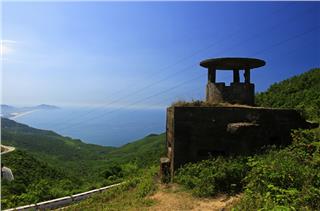
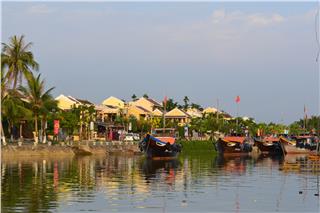
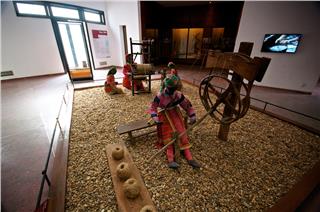
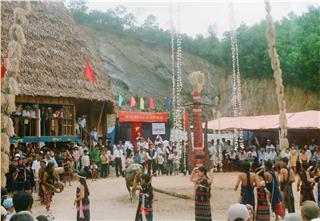

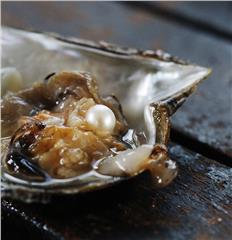

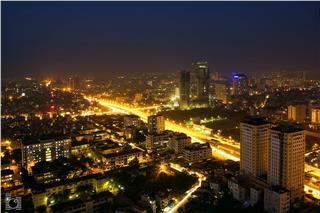
Hanoi is famous for 36 streets. While Thuy Khue is the longest street with the length of 3200 meters, there are 10 short streets with the length of less than 100m. Thang Long- Hanoi with 1000 years of history is home to short streets with great historical and cultural significance to local life. There remain lots of surprises about these short streets that those who are living in other streets in Hanoi may not know.
Along with O Cau Giay, O Cau Den, O Cho Dua and O Dong Mac, O Quan Chuong is an ancient gateway to Hanoi. The street is about 75m long. An end of O Quan Chuong Street is crossed by Tran Nhat Duat street, while the other end of the street connects with Hang Chieu. Located in Dong Xuan ward, Hoan Kiem district, O Quan CHuong is the gateway to Hang CHieu, Dao Duy Tu, Thanh Ha and Tran Nhat Duat. O Quan Chuong gate is located at the end of the street where it meets Hang Chieu street. The gate was built in the shape of an arch. Its second floor is an observation post. Earlier, it had the large wooden doors. The guards closed the doors at night and opened them in the daytime.
The summons of Ha-Ninh governor Hoang Dieu and Hanoi province chief Hoang Huu Xung recorded on the stele mentioned the year of tiger 1878 and banned his men from harassing people going through the gate. According to Hanoi Epitaph Collection part 1, O Quan Chuong was also called Dong Ha gate or Thanh Ha gate. Citadels are found in many parts of the country. Yet, we find city gates in Hanoi only. It is said that Hanoi had 21 gates. And O Quan Chuong is the only surviving gate of its kind formerly seated on an earth wall surrounding the Thang Long imperial city. This east gate was built in 1749 and restored in 1817.
O Quan Chuong Street in the past was located in Dong Ha ward, Hau Tuc canton, Tho Xuong district. The street was set up during the French occupation period. It was then called Chieu Coi street where rush mats made in Nam Dinh and Ninh Binh were sold. There are 3 stories about the name of the gate Quan Chuong.
An article of Dao Trong Tam on an issue of Xua and Nay (Past and Present) magazine of the Vietnam Association of History Science dealt with a story about the name of O Quan Chuong written in his family records in khuc Thuy village (Thanh Oai - Hanoi). In 1876, a “Chuong Co” (a military mandarin) and more than 100 soldiers sacrified their lives in the flight against the French troops of Thanh Ha gate. The corpse of that mandarin was secretly sent home for burial by Dong Xuan canton chief Dao Dang Chieu, a Khuc Thuy villager. The mandarin’s heroic sacrifice spread widely. Since then when people passed this gate, they called it O Quan Chuong to commemorate that mandarin’s brave deeds. That’s why Thanh Ha gate was renamed Quan Chuong gate.
Generally speaking, since 1749 when the gate was built for the first time, it has undergone many ups and downs. Despite changes of its name, the gate remains here in its original shape. O Quan Chuong is the only surviving gate to Hanoi, the relic of Thang Long citadel, the evidence for the unyielding spirit of our people in the fight against invaders and the preservation of cultural heritages of the notion.
The street is home to a famous “cha ruoi” (grilled clam warm) restaurant. The restaurant owner and his neighbors are very hospitable. Hanoi is well-known for a rich cuisine which has become part of traditional culture. While enjoying delicacies, tourists can contemplate O Quan Chuong, the only ancient gate to Hanoi.
Earlier, this was the last section of the To Lich River where it met the Red river. The wharf here was called Giap Giang Nguyen and belonged to Huong Nghia hamlet, Ta Tuc canton (Phuc Lam canton later), Tho Xuong district. This last section was filled at the end of the 19th century. Before the section was filled, many rice shops gathered on the river bank. At first, it was a large plain where cereal sellers got together. They brought cereals from boats anchoring at the last section of the To Lich River. In this way, a cereal market was born. The market has recently been divided into two parts.
A bank office was built on the part facing Tran Nhat Duat street, while houses were built on the remaining part. That’s why the rice market was turned into two parallel streets as it is today. After filing up that To Lich river section, the French built a rice market here. Since then, Cho Gao (rice market) has become the name of the street. The French called the rice market Commerce Place which buzzed with activities related to rice like rice selling, rice husking and rice exporting. The street has been called Cho Gao since 1945.
Nevertheless, due to changes of life situation, people no longer trade in rice on this street. Cho Gao is a short street with a few houses. Yet, it is always busy with trading activities. An end of the street connects to Hang Buom Street. A well-known shop offering lemon tea and many kinds of sweet soups is situated in the Old Quarter, near Dao Duy Tu lemon tea shop. The shop is famous for “che dang” (bitter sweet soup). The name of the dish sounds strange. Actually, “che dang” consists of black jelly pieces (called “suong sao” in the South), coconut milk and condense milk. This dish is so simple. Yet many young people cannot resist its flavor for the first time they have tried it. With thousand years of culture, Hanoi seems familiar to all of us. Yet it keeps many interesting secrets inside. Perhaps no one could explore to the end of all unknown things about Hanoi. As time goes by, I feel attached to Hanoians and their culture.
Source: VTC10 - NETVIET

 Đặt vé máy bay cho người Việt?
Bấm vào đây
Đặt vé máy bay cho người Việt?
Bấm vào đây
Our service uses cookies for technical, analytical and marketing purposes. See our Cookie và Privacy policies for more information. If you agree to this, just keep browsing.


